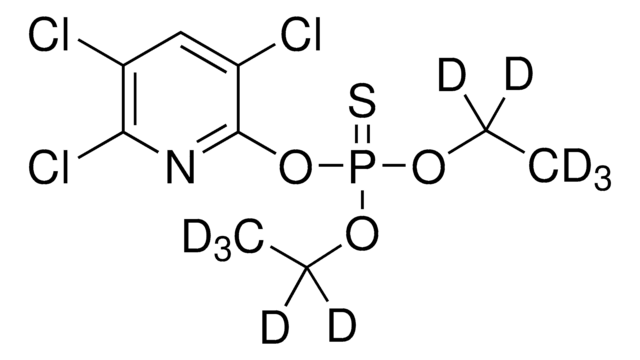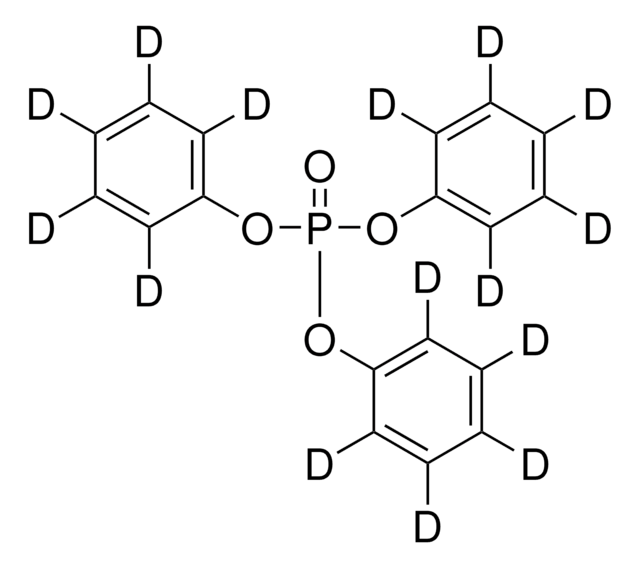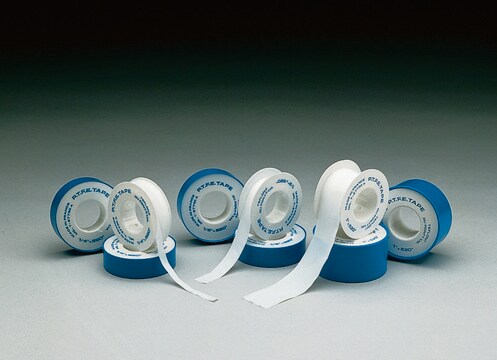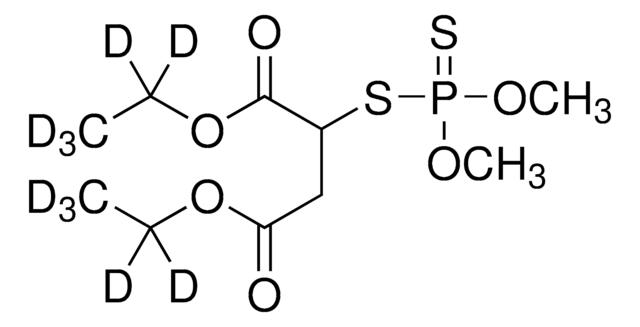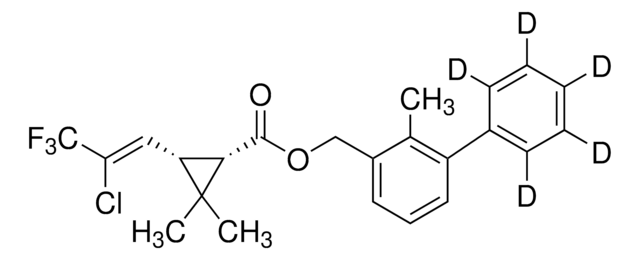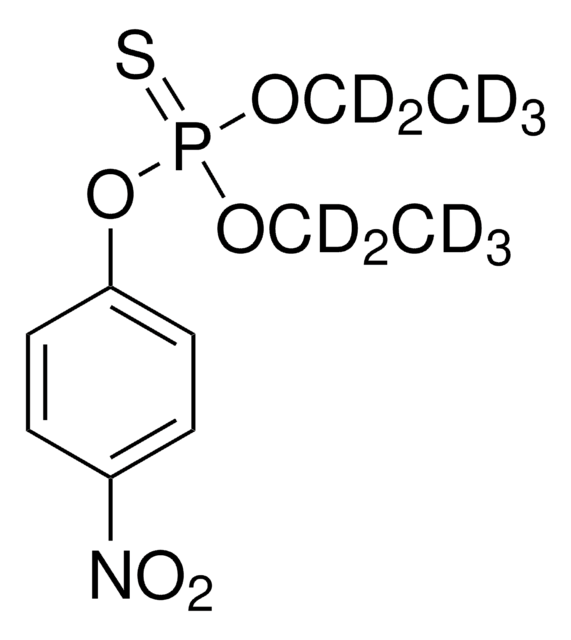492175
Diazinon-(diethyl-d10)
≥99 atom % D, ≥98% (CP)
About This Item
Prodotti consigliati
Purezza isotopica
≥99 atom % D
Saggio
≥98% (CP)
Indice di rifrazione
n20/D 1.4978 (lit.)
P. eboll.
83-84 °C/0.002 mmHg (lit.)
Densità
1.152 g/mL at 25 °C
applicazioni
agriculture
environmental
Spostamento di massa
M+10
Temperatura di conservazione
2-8°C
Stringa SMILE
[2H]C([2H])([2H])C([2H])([2H])OP(=S)(Oc1cc(C)nc(n1)C(C)C)OC([2H])([2H])C([2H])([2H])[2H]
InChI
1S/C12H21N2O3PS/c1-6-15-18(19,16-7-2)17-11-8-10(5)13-12(14-11)9(3)4/h8-9H,6-7H2,1-5H3/i1D3,2D3,6D2,7D2
FHIVAFMUCKRCQO-HXOHQZFQSA-N
Cerchi prodotti simili? Visita Guida al confronto tra prodotti
Applicazioni
- In analytical methods for routine monitoring of residual pesticide.
- As an internal standard in GC–MS quantification of pesticides in food.
Confezionamento
Avvertenze
Danger
Indicazioni di pericolo
Consigli di prudenza
Classi di pericolo
Acute Tox. 3 Oral - Aquatic Acute 1 - Aquatic Chronic 1
Codice della classe di stoccaggio
6.1C - Combustible acute toxic Cat.3 / toxic compounds or compounds which causing chronic effects
Classe di pericolosità dell'acqua (WGK)
WGK 3
Punto d’infiammabilità (°F)
235.0 °F - closed cup
Punto d’infiammabilità (°C)
112.8 °C - closed cup
Scegli una delle versioni più recenti:
Possiedi già questo prodotto?
I documenti relativi ai prodotti acquistati recentemente sono disponibili nell’Archivio dei documenti.
I clienti hanno visto anche
Il team dei nostri ricercatori vanta grande esperienza in tutte le aree della ricerca quali Life Science, scienza dei materiali, sintesi chimica, cromatografia, discipline analitiche, ecc..
Contatta l'Assistenza Tecnica.



